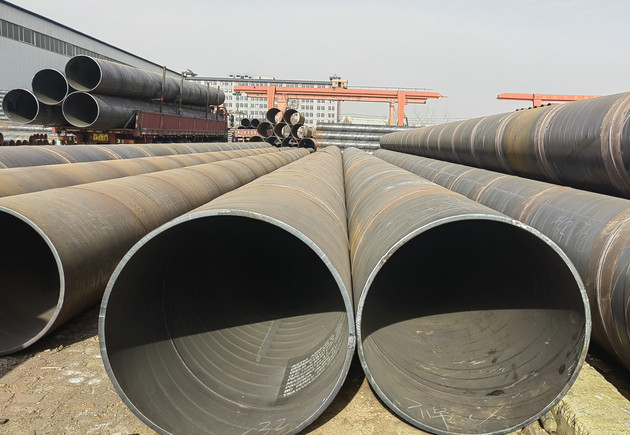Large diameter welded pipes (such as spiral welded pipes) are pipe products mainly used to transport liquids, gases, solids and other substances, and are usually made of steel. These pipes are commonly used in construction, petrochemical, industry, water supply, heating and other fields. The following is some relevant information about large diameter welded pipes:
1. Large diameter welded pipe size
The size of large diameter welded pipes usually refers to steel welded pipes with larger diameters. Generally speaking, the size of large diameter welded pipe will vary according to production standards and requirements. The size of large-diameter welded pipes can include diameters from 6 inches to 60 inches, wall thickness usually ranges from 5 mm to 30 mm, and the length can be customized according to customer needs, usually 6 meters, 9 meters or 12 meters, etc. This is just an example, actual dimensions will vary based on production standards, material requirements and usage. The specific size you need can be determined based on your project and needs.
2. Large diameter welded pipe material
Large diameter welded pipes can often be made from a variety of materials. Common materials include:
(1) Carbon steel: suitable for general industrial purposes and has good mechanical properties and welding properties.
(2) Alloy steel: It has the characteristics of high temperature resistance and corrosion resistance, and is suitable for high temperature and high pressure environments or the needs of special chemical industries.
(3) Stainless steel: It is corrosion-resistant and suitable for occasions with high requirements on material purity and surface.
(4) Other special materials: such as titanium alloy, nickel-based alloy, etc., suitable for special process requirements or special medium transportation.
Selecting the appropriate material depends on factors such as the specific use of the large diameter welded pipe, working environment, medium characteristics, and budget.
3. Manufacturing process of large diameter welded pipe
Different manufacturing processes are suitable for different pipe sizes, materials and usage requirements. Selecting the appropriate manufacturing process ensures the quality, performance and serviceability of welded pipe. Large diameter welded pipes usually use the following manufacturing processes:
(1) Straight seam welded pipe (
LSAW steel pipe): This process is to roll the steel plate into a tube shape, and then use a welding process to weld the edge of the tube plate with a long seam. This process is suitable for the production of large-diameter, thick-walled welded pipes, which are often used in pipeline systems for transporting liquids and gases.
(2) Spiral welded pipe (
SSAW steel pipe): This process is to roll the steel plate into a tube shape through a plate rolling machine, and then weld it through a continuous spiral welding process. Spiral welded pipes are suitable for pipes with larger diameters and thicker walls, and are mainly used to transport oil, natural gas or other media.
(3) Drawing method: Large-diameter thin-walled welded pipes are made by drawing steel billets. This process is suitable for occasions that require high surface quality and dimensional accuracy of pipes.
(4) Cold drawing method: After heating the steel billet to an appropriate temperature, the welded pipe is made by cold drawing process. This process is suitable for producing welded pipes with thin wall thickness and high dimensional accuracy requirements.
4. Large diameter welded pipe standards
The production and quality of large-diameter welded pipes generally need to comply with the following international standards and industry standards:
(1) ASTM standards: The American Society for Testing and Materials has formulated a number of welded pipe standards, such as
ASTM A53/A53M, ASTM A252, ASTM A139, etc., covering the requirements and uses of welded pipes of different materials and sizes.
(2) API standards: The American Petroleum Institute has promulgated a series of standards for the oil and gas industry, including standards for welded pipes and seamless pipes, such as API 5L.
(3) DIN standards: The German Standardization Organization has promulgated a number of steel pipeline standards, such as DIN 2458, DIN 1626, etc.
(4) GB standards: The China National Standardization Administration Committee has promulgated a series of national standards for welded pipes, such as GB/T 3091, GB/T 9711, etc.
These standards cover the material, size, manufacturing process, inspection requirements, etc. of welded pipes, ensuring the quality and safety of welded pipe products. In actual procurement and use, standard products that meet the requirements should be selected based on specific project needs and relevant national/regional regulations and standards.
Read more: Seamless vs Welded Pipe or Small Diameter Welded Pipe


